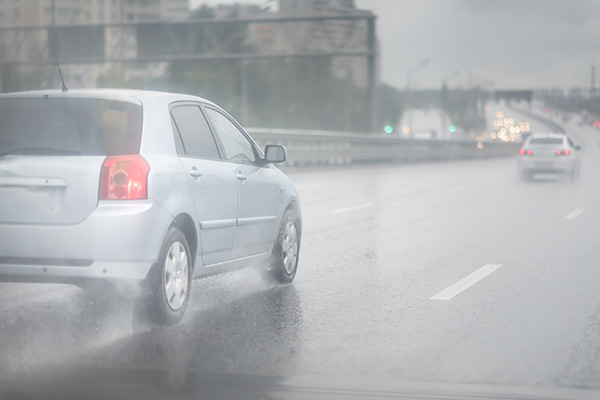
Driving through heavy rain or over wet roads can be nerve-wracking, especially when your vehicle begins to hydroplane. Hydroplaning occurs when water builds up between your tires and the road, causing your car to lose traction. This can lead to a temporary loss of control, making it difficult to steer or brake effectively. Knowing how to respond during hydroplaning is essential for staying safe on the road. Let’s discuss what causes hydroplaning, how to prevent it, and most importantly, how to regain control if it happens to you.
What Causes Hydroplaning
Hydroplaning is more likely to occur when water covers the roadway, and your tires struggle to push it away fast enough. This often happens when you’re driving at high speeds, have worn tires, or encounter roads with poor drainage. Even light rain can create dangerous conditions, particularly if it mixes with oil or dirt already on the surface.
Your tire tread plays a vital role in reducing the risk. Tires with deep grooves channel water away from the contact area, improving grip. However, as the tread wears down, the ability to disperse water diminishes, increasing the chance of hydroplaning.
How to Prevent Hydroplaning
While you can’t always avoid driving in wet conditions, there are several ways to reduce your risk of hydroplaning:
- Maintain Proper Tire Tread Depth: Regularly check your tires for signs of wear. The recommended tread depth is at least 2/32 of an inch, though deeper tread offers better grip in wet conditions.
- Drive at Safe Speeds: Slow down when roads are wet. Hydroplaning is more likely to happen when driving above 35 mph, especially in standing water.
- Avoid Sudden Movements: Quick turns or abrupt braking can cause your tires to lose traction. Be gentle with the steering wheel and brakes during wet weather.
- Stay Away from Puddles: Deep water can make hydroplaning more likely. Stick to the middle lanes, as water tends to accumulate on the outer edges of the road.
What to Do When You Start Hydroplaning
The moment you feel your car beginning to hydroplane, it’s easy to panic. However, staying calm and reacting appropriately can make all the difference:
1. Ease Off the Gas
Resist the urge to slam on the brakes. Instead, take your foot off the accelerator gradually. Sudden braking can lock up your wheels and worsen the situation.
2. Steer in the Direction You Want to Go
Gently steer your car in the direction you want to go. Avoid overcorrecting, as this can cause your car to skid. Keep your hands steady on the wheel and let the tires regain traction naturally.
3. Don’t Use Cruise Control
If you’re using cruise control, turn it off. Cruise control can maintain speed even when traction is lost, which increases the risk of losing control entirely.
4. Wait for Traction to Return
Hydroplaning typically lasts only a few seconds, though it can feel much longer. As your tires regain contact with the road, you’ll notice a change in how the car handles. At this point, continue driving cautiously.
Why Professional Maintenance Is Key
Preventing hydroplaning begins with proper vehicle maintenance. Regular tire inspections, alignments, and rotations help ensure your tires can perform effectively in wet conditions. A professional can also check your tire pressure and tread depth, offering guidance if it’s time for a replacement.
If you live in Houston, TX, where sudden downpours are common, keeping your car in top shape is especially critical. A trusted repair shop can help identify any vulnerabilities before they become hazardous on wet roads.
Worried about your tires’ ability to handle wet roads? Visit Space Center Automotive of Clear Lake in Houston, TX, for a comprehensive tire inspection. Our team will ensure your vehicle is ready to tackle any weather safely. Book your appointment today!